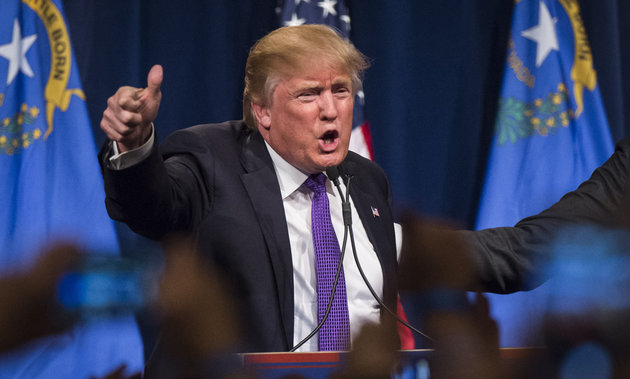
Donald Trump, who has spent much of his presidential campaign loudly disparaging Latino immigrants, seems to have won a plurality of the Latino vote in Nevada's GOP caucus on Tuesday.
Per entrance polls, he had the support of 45 percent of Latino caucus-goers to Florida Sen. Marco Rubio's 28 percent and Texas Sen. Ted Cruz's 18 percent. That's very close to the 47 percent Trump apparently took among white caucus-goers.
The statistic, while striking, needs a few caveats. Entrance polls, like other surveys, aren't an exact science, especially when it comes to very small populations. Just 132 of the caucus-goers surveyed were Latinos, giving the results a margin of error of plus or minus 10 percent.
Measuring opinions among Latino voters can be especially tricky. Entrance polls for Nevada's Democratic caucus last weekend showed Sen. Bernie Sanders doing unexpectedly well among those voters, sparking a wave of controversy about their accuracy.
Still, even if Tuesday's poll numbers don't exactly match the actual vote, they show Trump carrying significant support from a group he has repeatedly denigrated.
"I still think we can be pretty confident that Trump won the Hispanics who caucused last night," exit pollster Joe Lenski of Edison Research told HuffPost in an email. "He won just about every demographic group."
Rubio, who came in second in the Nevada caucus, offered one explanation for Trump's success on Wednesday.
"Americans of Hispanic descent ... care about the future of our country. They care about everything else people care about. They care about jobs. They care about terrorism. They're impacted by illegal immigration negatively in communities that are overrun by that," Rubio said in a Fox News interview.
Trump's supporters, though, aren't a good representation of Nevada Latinos as a whole. Most of them don't vote Republican, as political scientist David Damore highlighted in this chart, based on the entrance polls and an analysis of party identification:


